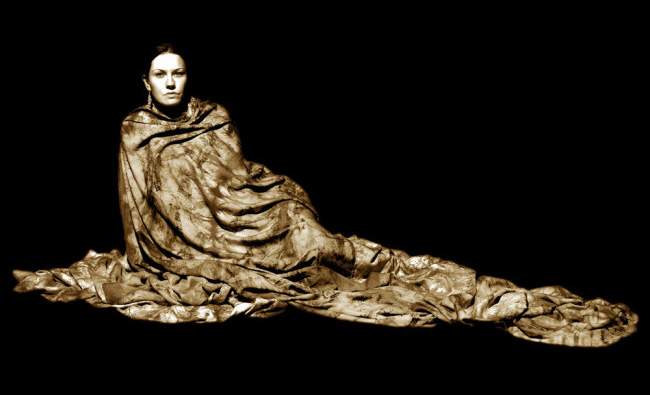Nicole Foreshew: born in darkness before dawn
Don't miss these luminous, slow-moving projections on the facade of the Australian Museum.
Overview
This article is sponsored by our partners the City of Sydney.
This summer, the City of Sydney's City Art program will light up the William Street side of the Australian Museum with projections of larger-than-life Aboriginal women draped in cloth. These sepia-drenched, architectural bodies speak of the need to reconnect with, and revitalise, Australia's Aboriginal and Torres Strait Islander identity.
born in darkness before dawn (2013), by Sydney-based Wiradjuri artist Nicole Foreshew, will be launched as part of the City of Sydney's Eora Journey: Recognition in the Public Domain, which recognises and celebrates the ‘living culture of the Aboriginal and Torres Strait Islander community in Sydney’ under the guidance of curatorial advisor Hetti Perkins.
The work is also part of the inaugural Corroboree Sydney, a new festival celebrating Indigenous culture. Cast upon the William Street facade of the building opposite Cook and Phillip Park, the projections will be approximately three hours in duration, combining slow movement and still imagery.
In elaborating on the significance of the cloth, which is imbued with traces of mineral and plant specimens, Foreshew explains this is to "emphasise the transition of space, as it is always moving between social relationships which are generated within the logic of place: revolving around people, occupying, owning, seizing, losing or transforming a space". Hence, the translucence and fluidity of cloth can be perceived as evoking the fluctuating historical moments of possession, dispossession and repossession, and their deeply felt social repercussions.
Foreshew also states that, "the body is used to perform the absence of place". In this way, she is addressing the subjugated women of colonial Australia and reinscribing them into history. There is a sense of architectural power and stateliness evoked by the textured folds of the women's cloth-garments, as if rivalling the aesthetics of ancient civilisations.
The siting of the work is significant as the Australian Museum houses a rich collection of Aboriginal artefacts that complements Corroboree's central theme of 'place' and 'living culture'. The work will engage with personal histories and negotiate a sense of community and belonging. The work responds to Indigenous usurpation, bespeaking the robbery of their status as the original inhabitants of the land. By etching a contemporary and bodily Aboriginal presence into the facade of one of Sydney's iconic landmarks, Foreshew challenges Australia's colonial narrative and promotes the historical and cultural significance of the site for Aboriginal and Torres Strait Islander people.
For more information, visit the City Art website.





